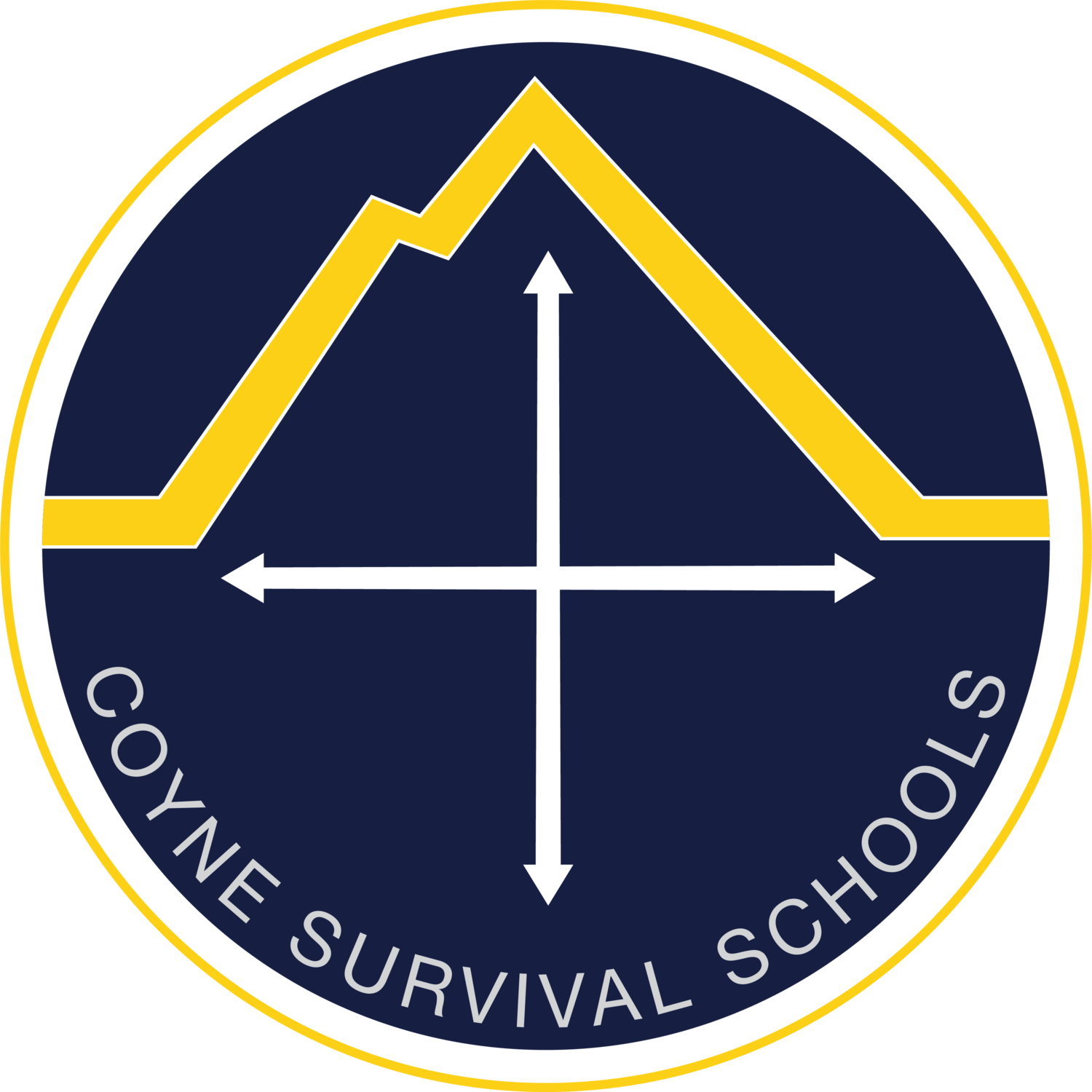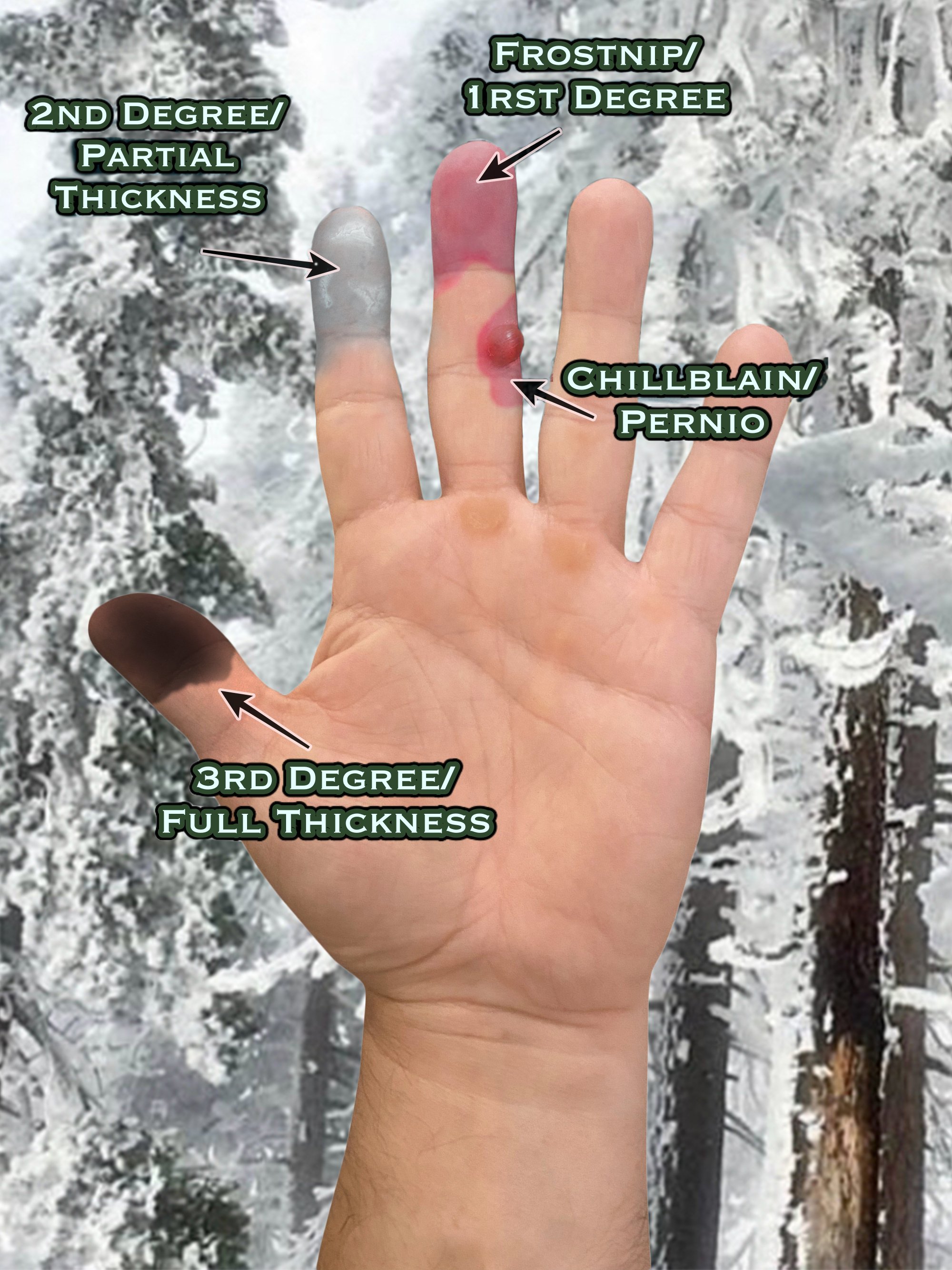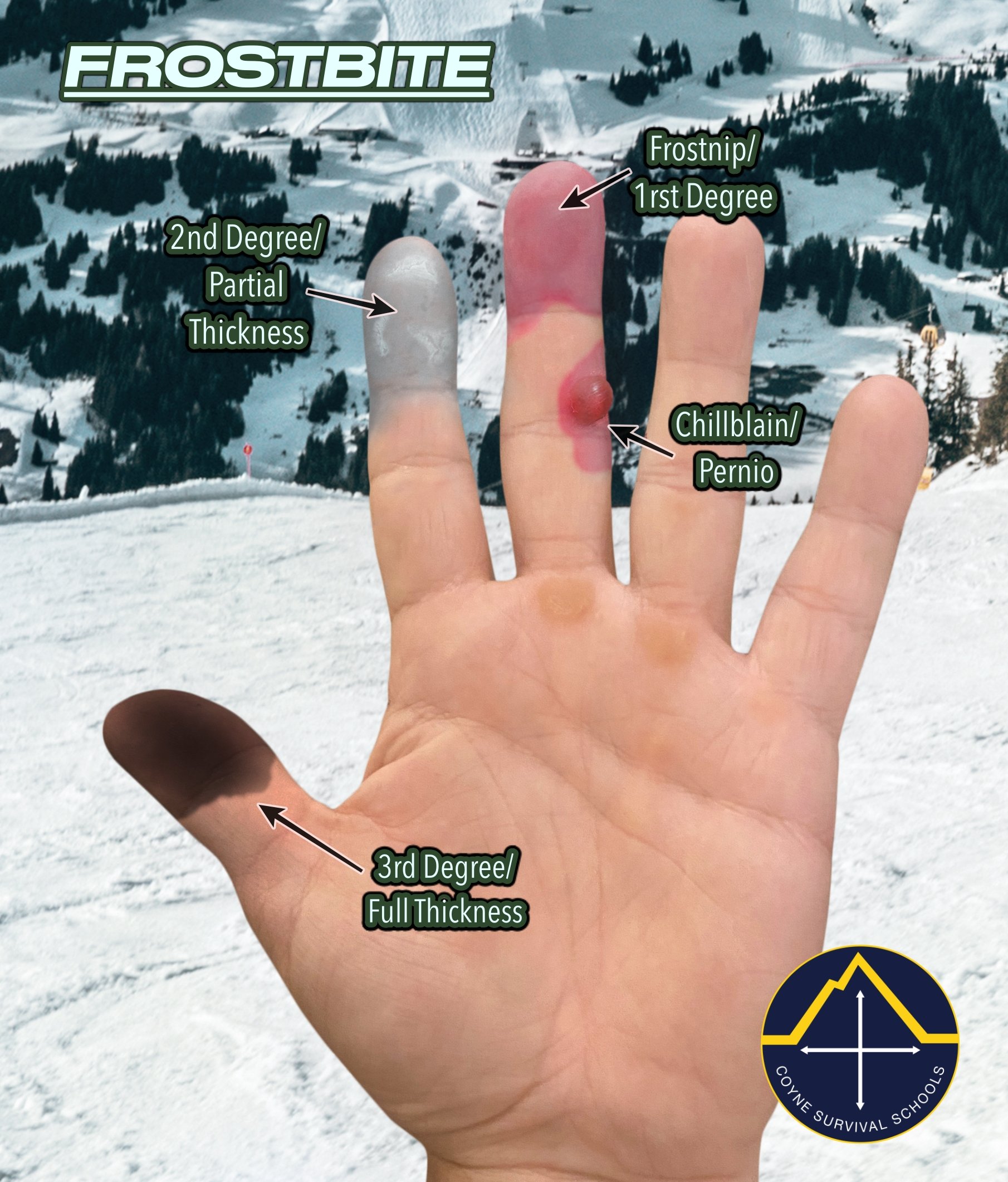Winter is coming, be prepared! Here are some tips for both recognizing and understanding frostbite:
1rst Degree/Superficial: Known as frostnip, this only affects the outermost layer of skin and there are generally no lasting effects. The skin will be red and may swell.
2nd degree: The skin has frozen beyond just its first layer, and it will have a white-grey appearance and may feel "waxy" to the touch. Blisters may form after rewarming.
3rd degree: All three layers of skin have frozen, and tissues underneath may begin to be affected, there will likely be severe lasting effects, and tissue can become necrotic. It may initially be white-grey but may turn black after rewarming. Blisters may form after rewarming.
Chillblain/Pernio: Similar to frostnip, this occurs upon prolonged exposure to wet weather in above, but fairly near-freezing temperatures. Blisters may form alongside the formation of red, swollen, irritated skin.
FYI: skin turning black, and blister formation, may take several hours to form after rewarming the area.
*Do not attempt rewarming until you are sure the tissue will not freeze again.
*Rewarm by immersing the area in approximately 100F water. Rewarming can be very painful to the patient.


